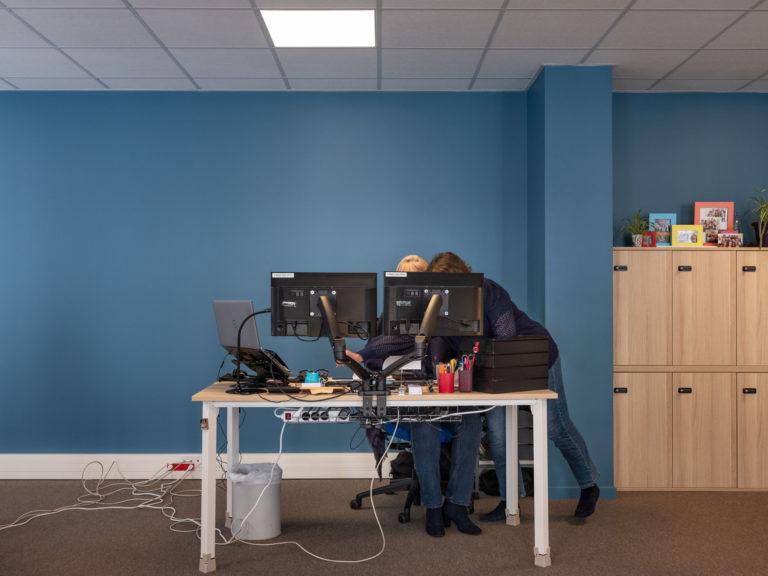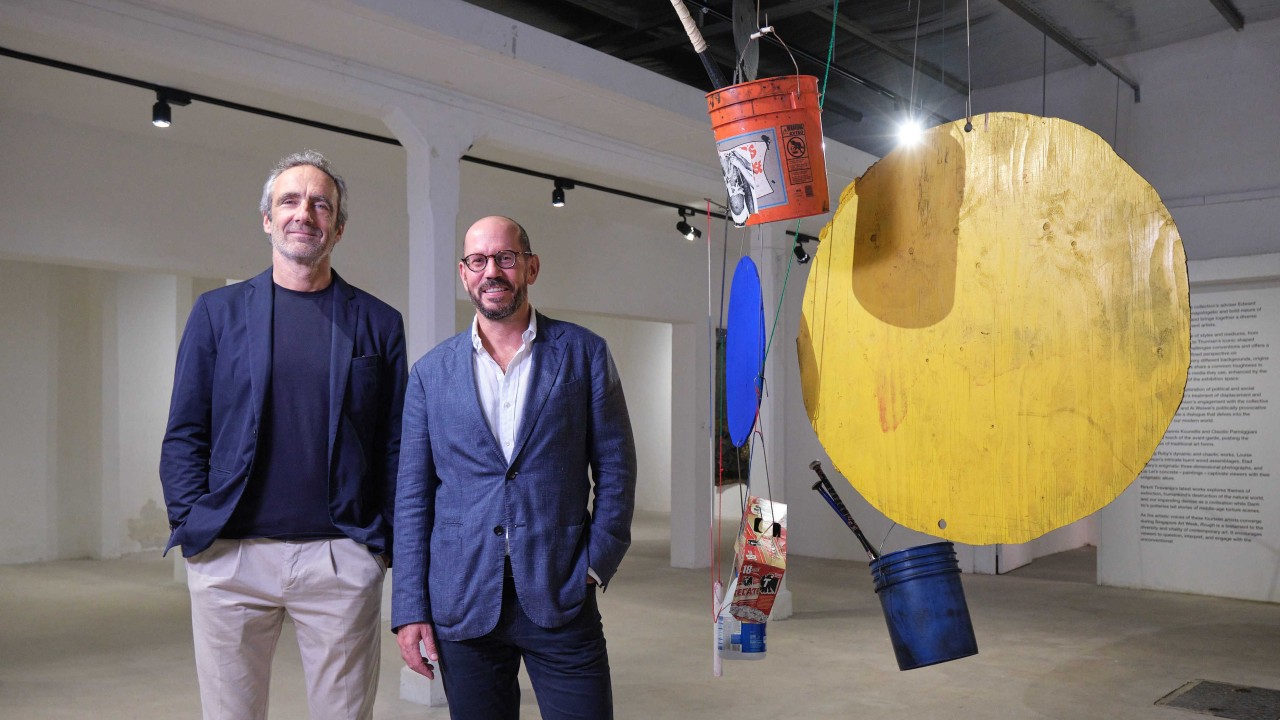Cityscapes 1 (boats), 2 (woods)
2010 - Photography (Photography)
Hamra Abbas
At first glance, Cityscapes (2010) seems to be a collection of panoramic photographs of the city of Istanbul—the kind that are found on postcards in souvenir shops. A closer examination, however, reveals that a key element—the minaret—has been systematically removed, thereby changing profoundly the history and religious character of the city. The work is a response to a November 2009 referendum in Switzerland that approved a ban on the construction of new minarets in that country. It was also a crucial time in Turkey’s negotiation for entrance into the European Union. Instead of making a direct, didactic comment on the controversy, however, Abbas offers up a clever question regarding how landmarks are interpreted in vastly different ways depending on their cultural context. In the Western imagination, minarets are political symbols as much as they are religious architecture. In the Muslim world, they serve as mnemonic devices that enable residents to recognize their own city.
Hamra Abbas, who lives and works in Boston and Islamabad, Pakistan, makes work that has a profound connection to her own cultural context. She asks probing questions about the everyday and its complex relationship with history and ideology; her subject matter ranges from religious rituals to war and the sexual iconography of the Kama Sutra. Working with a diverse range of materials and media, Abbas frequently intertwines the contemporary with the classic to offer up a critique of both modern Western and Islamic cultures.
Colors:
Related works featuring themes of: » Appropriation Art, » Collective History, » Contemporary Conceptualism, » Contemporary Pop, » Pakistani
» see more

© » KADIST
Dinh Q. Lê
2008Hill of Poisonous Trees (three men) (2008) exemplifies the artist’s signature photo-weaving technique, in which he collects diverse found photographs—portraits of anonymous people, stills from blockbuster films, or journalistic images—cuts them into strips, and weaves them into new composition...

© » KADIST
Hank Willis Thomas
2012Like many of his other sculptural works, the source of I am the Greatest is actually a historical photograph of an identical button pin from the 1960s...

© » KADIST
Hank Willis Thomas
2012Thomas’ lenticular text-based works require viewers to shift positions as they view them in order to fully absorb their content...
Other related works, blended automatically
» see more

© » KADIST
Dinh Q. Lê
2008Hill of Poisonous Trees (three men) (2008) exemplifies the artist’s signature photo-weaving technique, in which he collects diverse found photographs—portraits of anonymous people, stills from blockbuster films, or journalistic images—cuts them into strips, and weaves them into new composition...

© » KADIST
Lisa Oppenheim
2003The Damaged series by Lisa Oppenheim takes a series of selected photographs from the Chicago Daily News (1902 – 1933) as its source material...

© » KADIST
Hank Willis Thomas
2012Intentionally Left Blanc alludes to the technical process of its own (non)production; a procedure known as retro-reflective screen printing in which the image is only fully brought to life through its exposure to flash lighting...
Related works sharing similar palette
» see more

© » KADIST
Martin Creed
2003This photograph of Martin Creed himself was used as the invitation card for a fundraising auction of works on paper at Christie’s South Kensington in support of Camden Arts Centre’s first year in a refurbished building in 2005...

© » EYE OF PHOTOGRAPHY
© 2023 All rights reserved - The Eye of Photography Olivier Culmann, URSSAF Normandie, site du Havre @ Olivier Culmann Le Havre, Seine-Maritime, Normandie, France 10/05/2023 © Olivier Culmann / Tendance Floue @ Thomas Jorion @ Sidonie Van Den @ Isabelle Scotta @ Carlo Lombardi S From October 21st to January 7th, 2024, for its 14th edition, 25 international photographers, both established and emerging, can be discovered in an open-air exhibition tour throughout the city, on the beach, and indoors at Point de Vue and Les Franciscaines...
Related artist(s) to: Hamra Abbas » Lawrence Weiner, » Abu Dhabi, » Agnes Janich, » Alberto Duman, » Amir H Fallah, » Ana Vidigal, » Antonia Carver, » Ayse Erkmen, » Bani Abidi, » Basma Al-Sharif
» see more

© » KADIST
Bani Abidi
2008The threshold in contemporary Pakistan between the security of private life and the increasingly violent and unpredictable public sphere is represented in Abidi’s 2009 series Karachi ...

© » KADIST
Bani Abidi
2012The perceived effortlessness of power, projecting above experiences of labored subordination is examined in Death at a 30 Degree Angle by Bani Abidi, which funnels this projection of image through the studio of Ram Sutar, renowned in India for his monumental statues of political figures, generally from the post-independence generation...

© » KADIST
Bani Abidi
2008The threshold in contemporary Pakistan between the security of private life and the increasingly violent and unpredictable public sphere is represented in Abidi’s 2009 series Karachi ...
Related works found in the same semantic group
» see more
© » THE INDEPENDENT
Sweden Sweden Sweden The ultimate city guide to Malmö, Sweden’s trendy coastal hub Stockholm How to spend a day in Sodermalm, Stockholm’s coolest neighbourhood Travel Justine Gosling A bird’s life: Welcome to the treehouse hotel that gives you wings Stockholm Best hotels in Stockholm for a cool city break Sweden How to spend a weekend in Gothenburg Stockholm 48 hours in Stockholm Stockholm Ett Hem, Stockholm: The fine art of making you feel at home Sweden Room Service: Clarion Hotel Post, Gothenburg...






